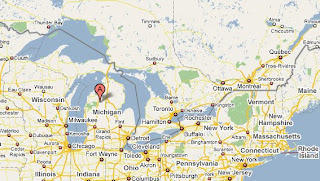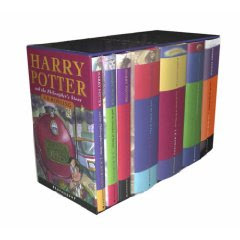
Can you name the capital city of any country? Could you name all the countries of Europe? Is Vanuatu a country or a city? And where is Montenegro anyway?
These are the sort of questions that used to bug me. How could I build up my General Knowledge of the world as quickly and comprehensively as possible? A good starting point is knowing the names of each country and their capital cities.
I decided to memorise the names of all the countries of the world and their capital cities. My strategy was to use peg words with which to associate the information.
1.
The first step was to compiling a list of countries and capital cities. I used the World Guide 11th edition (published in 2008) as my reference from which I created a spreadsheet of country names and capitals. The World Guide is available from
New Internationalist magazine.
2.
The next step was to sequence the countries to make a journey around the planet. Each country in my list should be a neighbour to the previous and next countries on the list. Sometimes this required crossing oceans, for example, going from the United Kingdom to Portugal. The advantage of remembering the countries in sequence is being able to recall a country's neighbour which helps recall the location of a country on the globe.
3.
I used the Major System and my key words for the numbers 0 to 99. Each of these numbers has a key image(a peg word), for example 21 is "net". Because there are more than 99 countries, I needed more peg words.
This problem was solved by extending the peg words by modifying them. This system is called the Self Enhancing Master Memory Matrix by Tony Buzan in his book "Master Your Memory". Very simply, it uses the hundred peg words then multiplies the list by 10 using some new images.
I modified my peg words using colours, so the numbers 100 - 199 are
Red, 200 - 299 are
Green, 300 - 399
Blue, 400 - 499
Brown, 500 - 599
Gold, 600 - 699
Violet, 700 - 799
Black, 800 - 899
Grey, and 900 - 999 are White. I only need the first three colours for the countries.
4.
I connected the peg words to the countries and their associated capitals. The first fifteen items on my list are shown below, showing the link from the peg number to the country and then to the capital. Some countries are very small and the names are the same, for example, Monaco, Vatican City and San Marino.
101 -> United Kingdom -> London
102 -> Ireland -> Dublin
103 -> Portugal -> Lisbon
104 -> Spain -> Madrid
105 -> Andorra -> Andorra la Vella
106 -> France ->Paris
107 -> Luxembourg -> Luxembourg
108 -> Monaco -> Monaco
109 -> Belgium -> Brussels
110 -> Netherlands -> Amsterdam
111 -> Germany -> Berlin
112 -> Liechtenstein -> Vaduz
113 -> Switzerland -> Bern
114 -> Austria -> Vienna
115 -> Italy -> Rome
5.
The memorisation technique was to take the peg word image for each number, then create an association to the country name. Next I would create an association between country and capital. For example, the peg word for 101 is
Tie (as in necktie), and 101 has the modifier of
Red. I imagined three kings (UNITED KINGDOM) tied up with a large red necktie and they were puffing up their chests (lungs -> LONDON) trying to escape.
I know some of the capital cities very well, for example, London is the capital of the United Kingdom. Some capitals have tricky spelling so more time was needed to be spent forming association, for exampled Ljubljana is the capital of Slovenia. My image was a packet of jubes being eaten by Jana Wendt, an Australian television reporter.
Here are some more of the associations I created:
104 - red Ra (pharaoh) waving a spanner (SPAIN) madly (MADRID) about
105 - red law -> Red faced judge opening a door (ANDORRA) covered with legal documents opening into a valley (LA VELLA)
106 - red shoe -> Red shoe kicking a soccer ball into the arc de triomphe (FRANCE, PARIS)
107 - red key -> Red key jammed into a bar of LUX soap squeezed between two hamburger buns
108 - red ivy -> Red ivy draped around a monk's neck (MONACO)
109 - red bee -> Red bee stinging a BELGIUM chocolate jammed between two BRUSSEL sprouts
6. How do I create the associations?
I found that I need to be in a relaxed state of mind to devise the associations. What I did was to cut up some cardboard into small pieces, and write the number on one side and the capital and country on the other side. I would take these cards on my walks and work on one card at a time, exploring associations and occasionally writing pencil notes on the card.
Names of countries and capitals need to be converted into memorable images. I try to find a word that reminds me of what I am remembering. For example, San Merino became a Merino sheep. Monaco becomes a MONK, Croatia became a CROW, and Bulgaria became a Bulging Sofa.
One of the big challenges was creating strong images for the foreign words. For example, Skopje sounds like Skippy (or skipping rope). Tbilisi (capital of Georgia) became a cup of Tea sitting on a duck's bill floating on the sea. This image was enough to recall Tbilisi. Abu Dhabi reminded me of Fred Flintstone yelling "Yabba Dabba Doo!".
Creating these associations is a powerful workout for creativity and imagination.
My lunch time and weekend walks are a great place and time for reviewing the cards and building up my memory. In addition I refine the associations for the numbers that were hard to recall.
7.
How do I test my knowledge?
As well as learning new information, I needed to review the older material. My cardboard flash cards are great for learning the new material as I usually only carry around 20 - 30 cards. The old cards are bundled with a rubber band, and a little bit clumsy to review. I could review the list from the beginning, but this is not efficient as some of the associations are well remembered and others are not.
I started using a Flashcard program (Mnemosyne) to test my knowledge. This is software that shows you a question, you think about your response, press a button to show the answer, then rate yourself on how well I knew the answer. Based on response to "how well do I recall I answer", the program schedules the card to be shown at a particular interval. Cards I know well get schedulded many days into the future, but the cards I don't know will be scheduled for much sooner. My strategy is to use the Flashcard program every day.
Another advantage of the Flashcard program is that it shows the cards at random. Trying to test myself using the physical cards meant I was seeing the cards in the sequence.
8.
Accessing a particular continent
What if I wanted to name all the countries for Asia Pacific? Which number do I start with? For this reason, I have memorised the starting numbers for each continent. I know that United Kingdom (the beginning of Europe) is 101 but Asia Pacific starts at 194. The number 194 can be translated with the Major System to Toe-bar (T-B-R). I imagine an Australian Holden car with a giant toe-bar at the back.
Yesterday I started creating associations for Africa which started at 216. This means I have already learnt 115 countries and capitals, so I am about half way through this project.


















